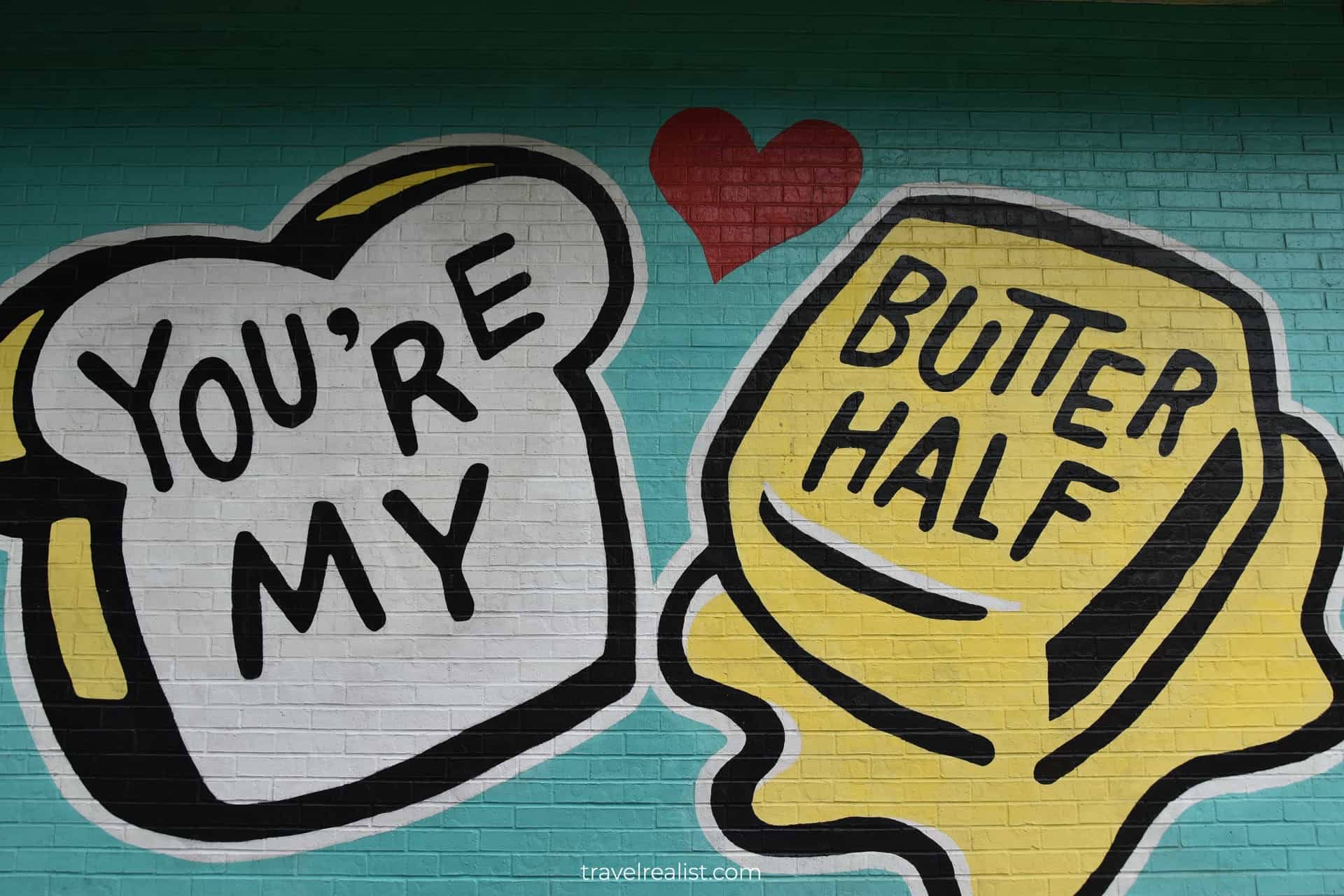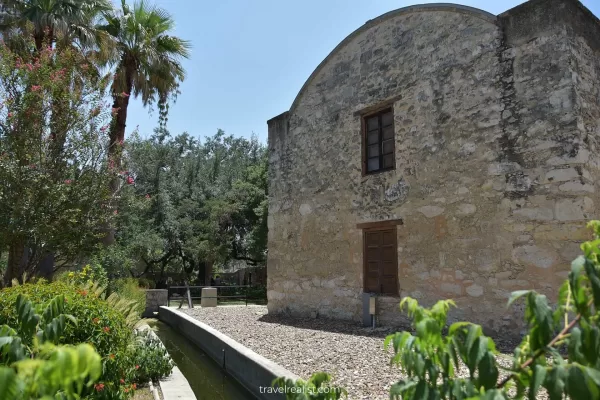Kilmainham Gaol: History of Irish Independence
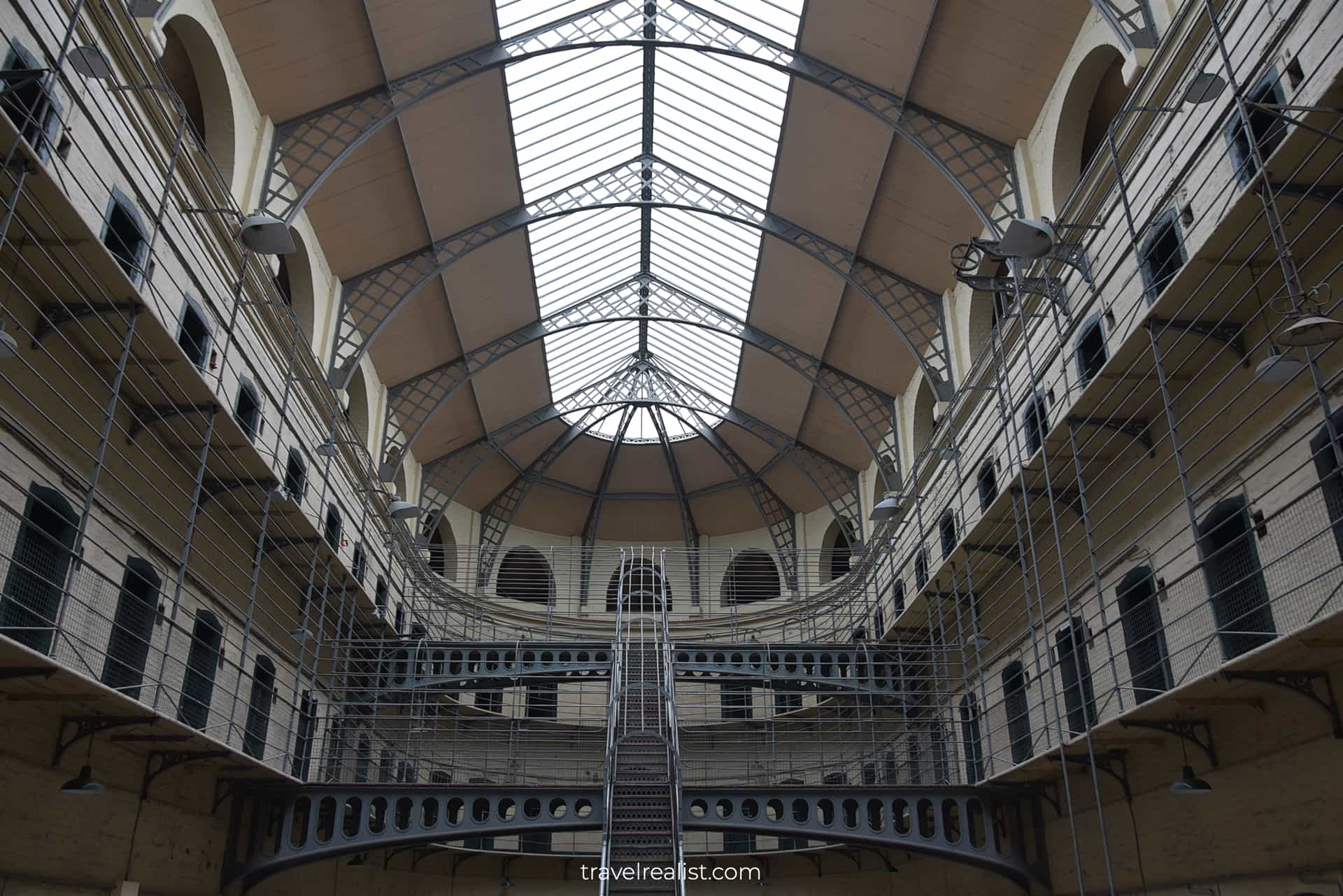
A Guide to Kilmainham Gaol Tour
Use our realistic Kilmainham Gaol Guide to learn about the Irish Independence fight through the lives of political prisoners.
Kilmainham Gaol in Dublin is a former prison turned museum. A tour of this historic prison is one of the top things to do in Dublin.
This post includes affiliate links that will earn us commission if you make a purchase via these links.
Kilmainham Gaol’s History
Kilmainham Gaol was opened in 1796 and decommissioned in 1924. Many prominent leaders of the Irish Republican movement served their sentences in Kilmainham Gaol. These included the members of the Irish rebellions, Easter Rising, War of Independence, and Civil War.
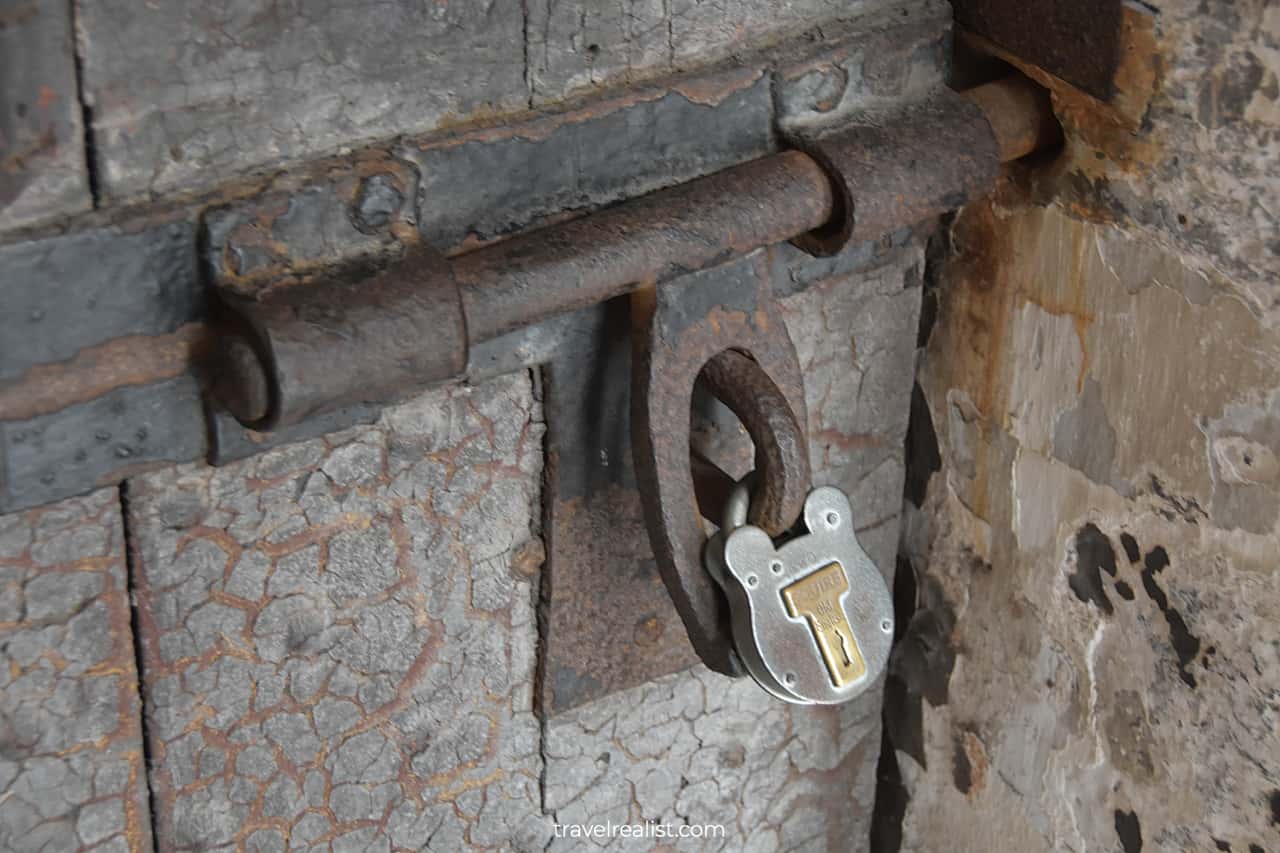
Back at the turn of the 18th century, Kilmainham Gaol replaced an older prison. But the new prison’s conditions hardly improved. The prisoners had to serve their time in cold dark rooms with no glass windows.
To make things worse, the prison did not isolate different groups. Men, women, and children were incarcerated together, up to 5 in each cell. The youngest prisoner of Kilmainham Gaol was 3 years old.
Sights & Places of Interest on Kilmainham Gaol Tour
Our Kilmainham Gaol Guide will follow the path of the guided tour. The museum requests visitors to arrive 15 minutes prior to the tour’s start. You could spend the time before the tour in the former trial room with plenty of sitting. Or you could head to the gift shop and the cafe.
Courthouse
The tour begins at the former Kilmainham Courthouse. This is the place were future prisoners learnt about their sentences.
As you embark on the tour, take notice of little details around you. There is a lot to see, from worn out stairs and narrow passages to tiny cells, locks, and scribbles on the walls.
Only a handful of wall art belongs to former prisoners. Your tour guide will point them out. The rest belongs to the visitors who vandalized the prison walls.
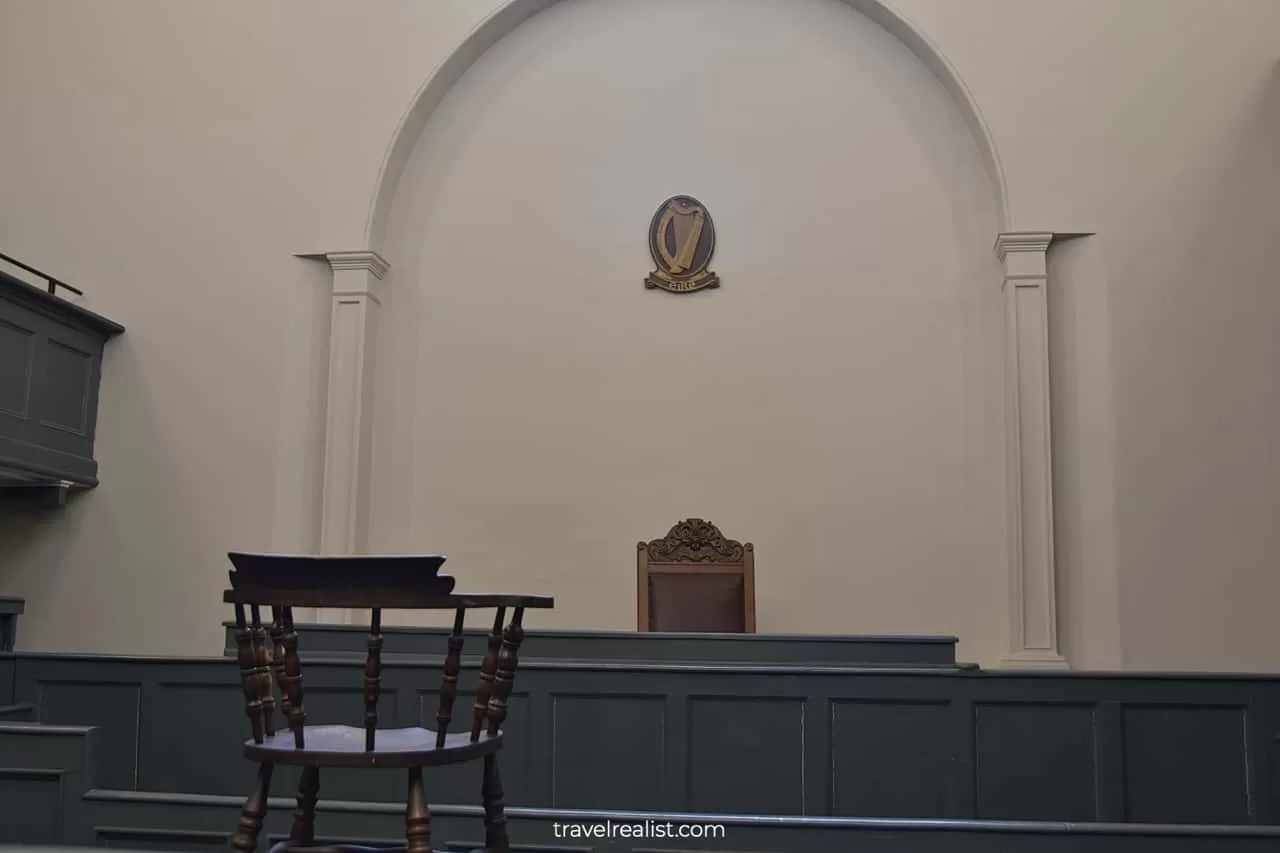
Catholic Chapel
The Catholic Chapel is the next chamber on the tour. There were two chapels at Kilmainham Gaol, a Catholic and a Protestant. The latter is not open to the public. The chapel held mass every Sunday. It was one of the few places when prisoners from different cells could see one another.
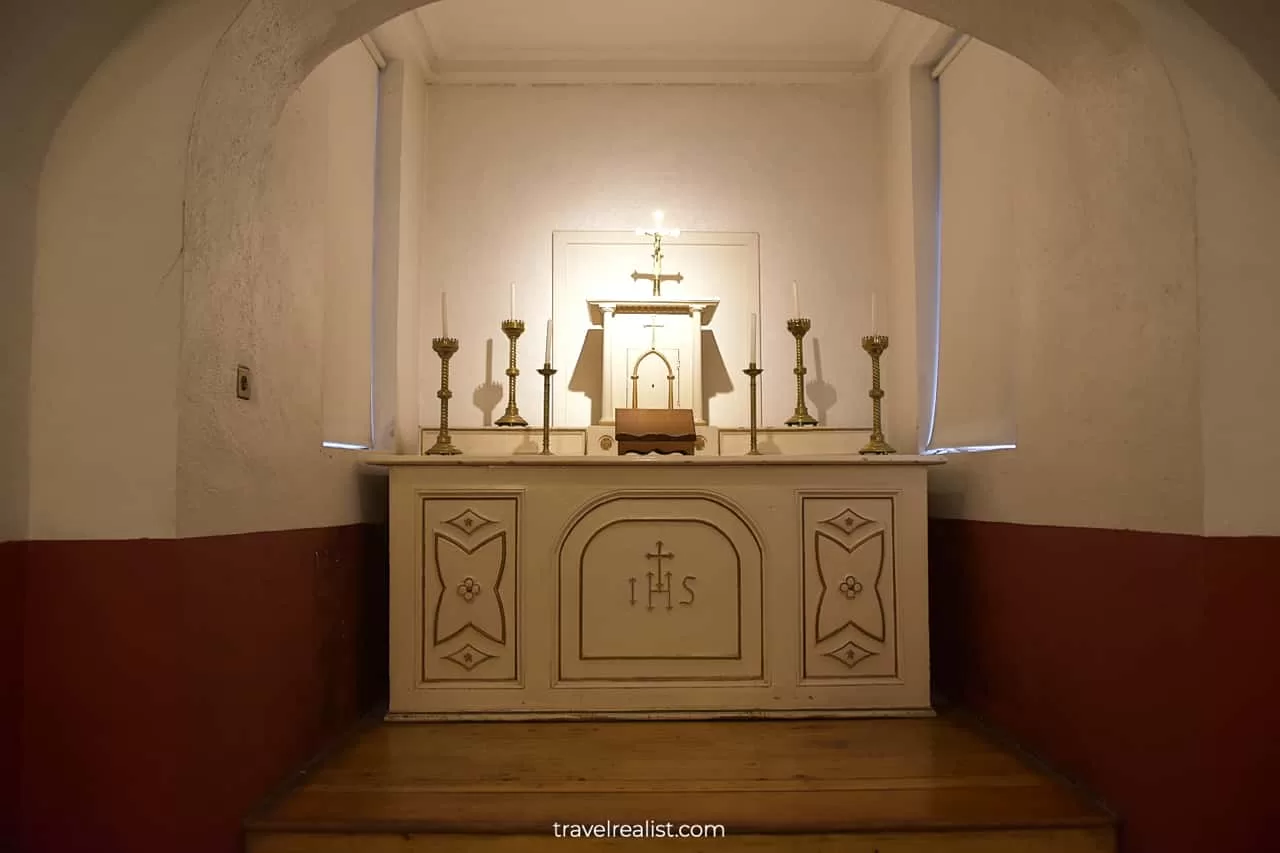
The priests also performed other religious services in the chapel. The chapel’s most notorious wedding took place in 1916. Joseph Plunkett and Grace Gifford were two Irish revolutionaries who married there just hours before Joseph’s execution.
West Wing
After the Catholic Chapel, the tour proceeds to the West Wing. It is the oldest section of Kilmainham Gaol. And it is the only part of the prison preserved in its original state.
- There were no glass windows, heating, or light in the prison.
- It was extremely gloomy, cold, and dark.
If you visit on a cold day, you can almost feel the chilling air coming from the windows.
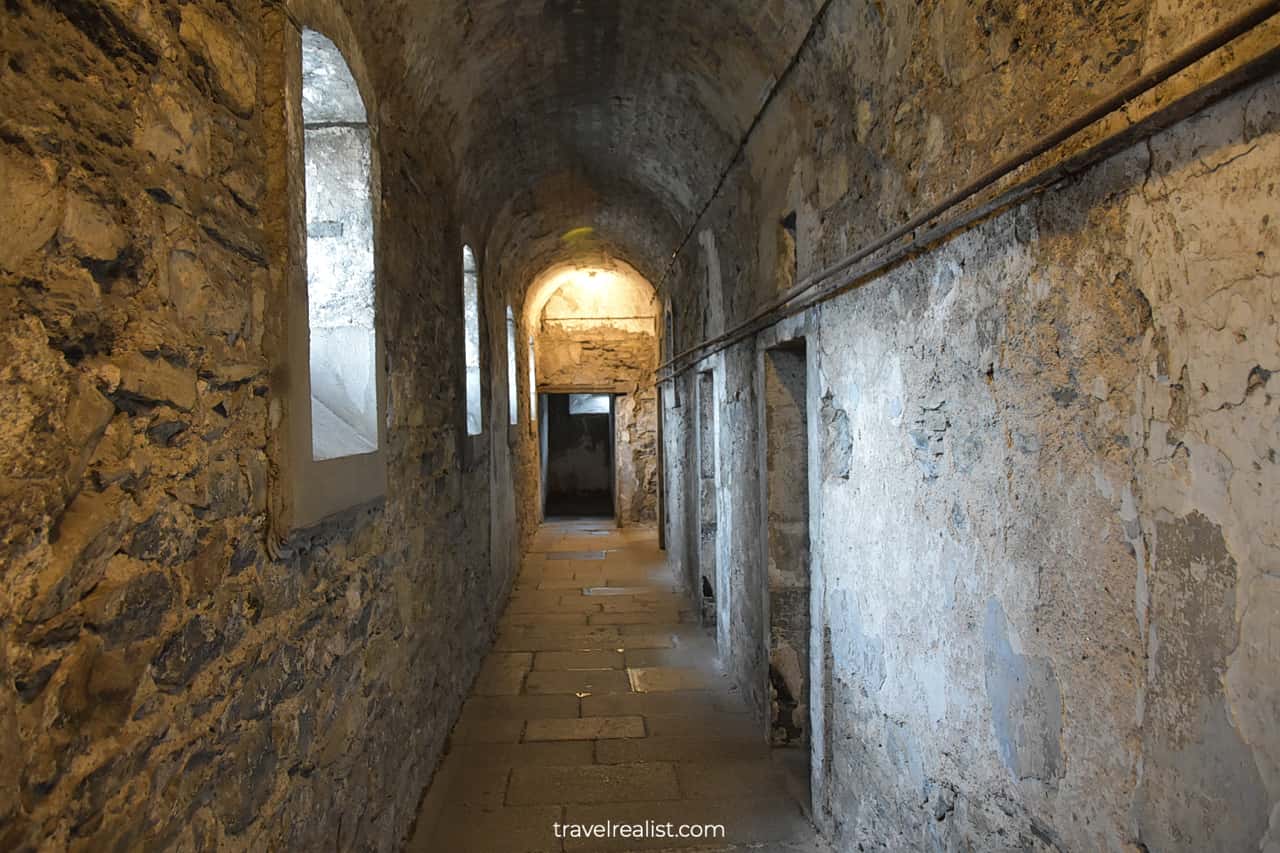
Political prisoners made up most notable inmates of the West Wing. This wing is also famous for three prisoners who managed to escape it.
Ernie O’Malley, Simon Donnelly, and Frank Teeling broke free on February 14th, 1921. British guards helped them smuggle bolt cutters, enabling the three men to escape.
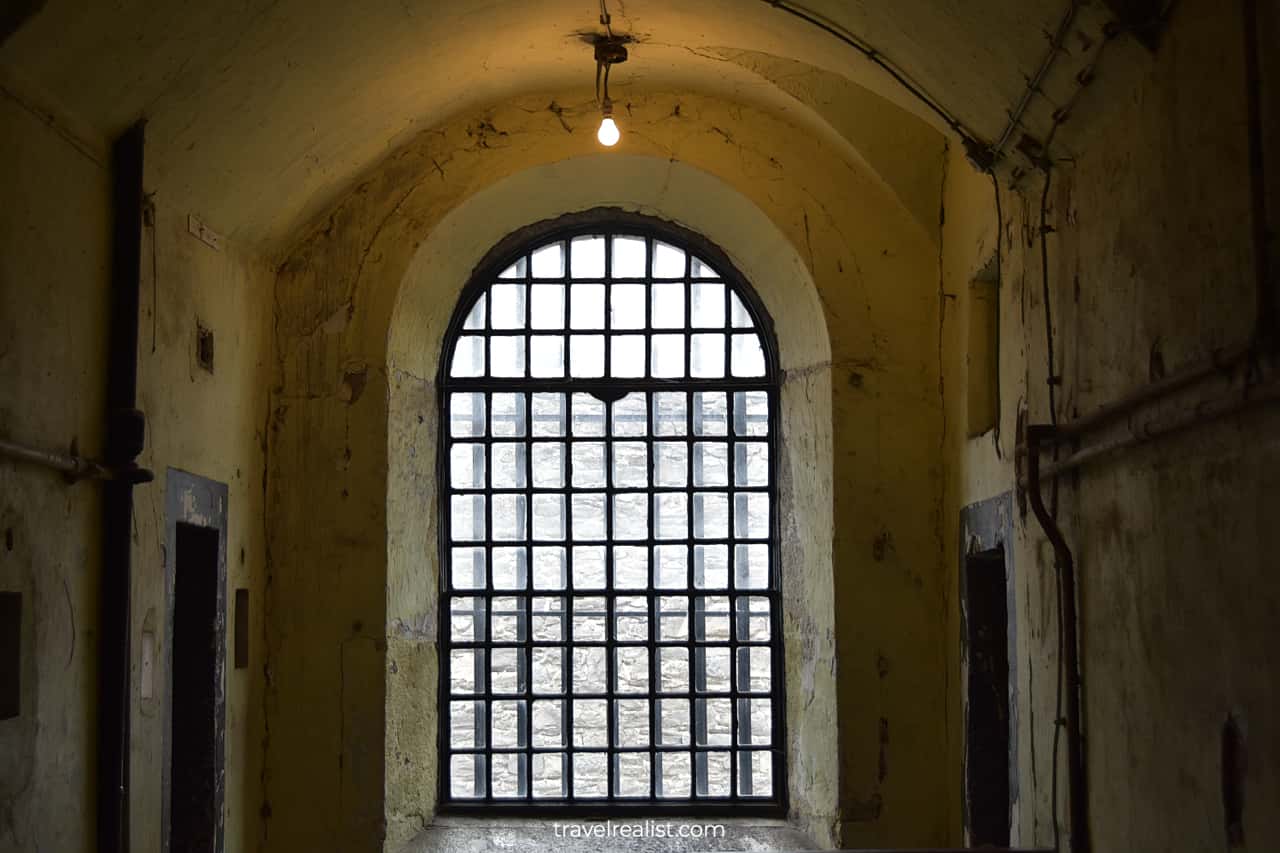
East Wing
Our Kilmainham Gaol Guide will now transition to the East Wing. The newer East Wing was completed in 1860s. Its design follows the Victorian prison theory.
It makes the prison the most unpleasant place to deter people from committing crimes and ending there. Prisoners spent most of their time in silence, alone in their cells, performing hard and boring work.
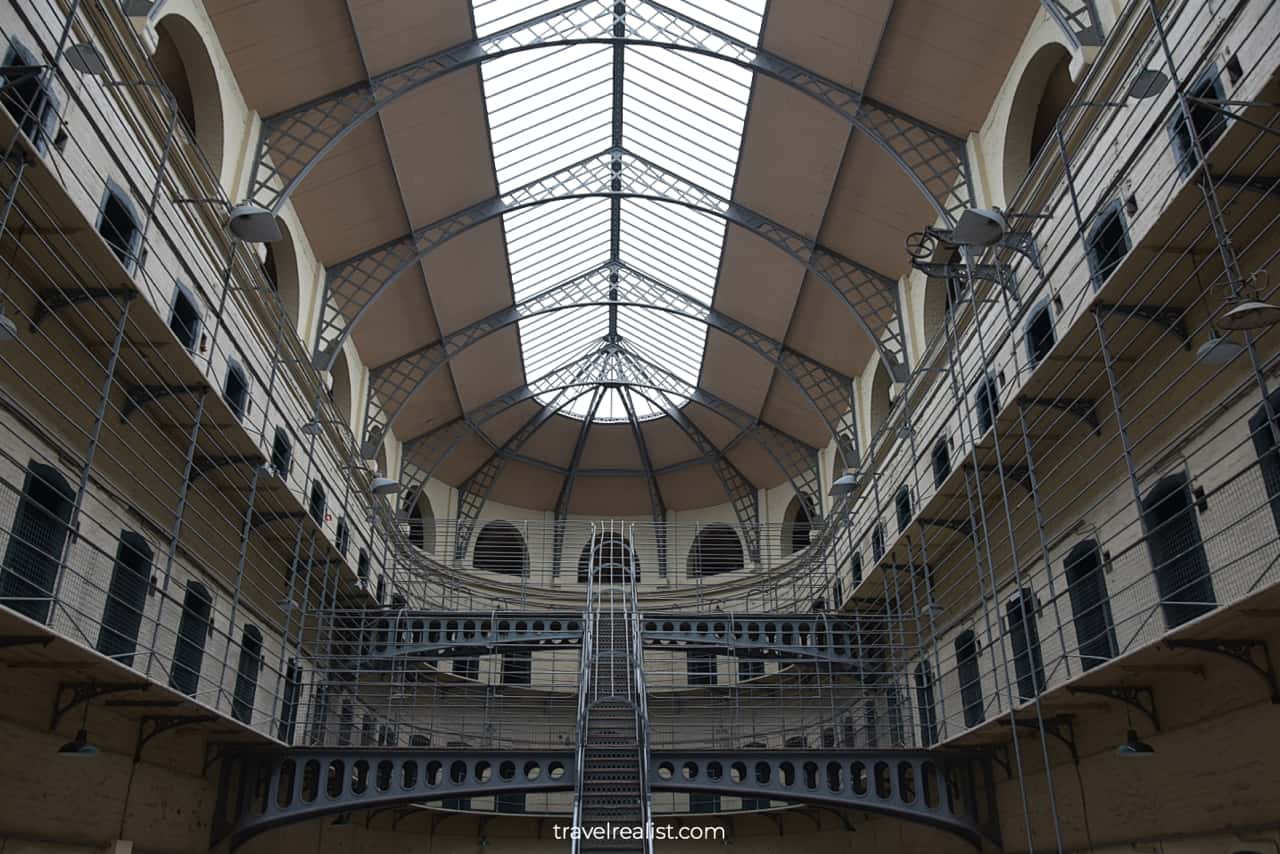
The main hall is 3 stories high. It has a network of iron galleries and catwalks on every side. This made all 96 cells visible from the central platform.
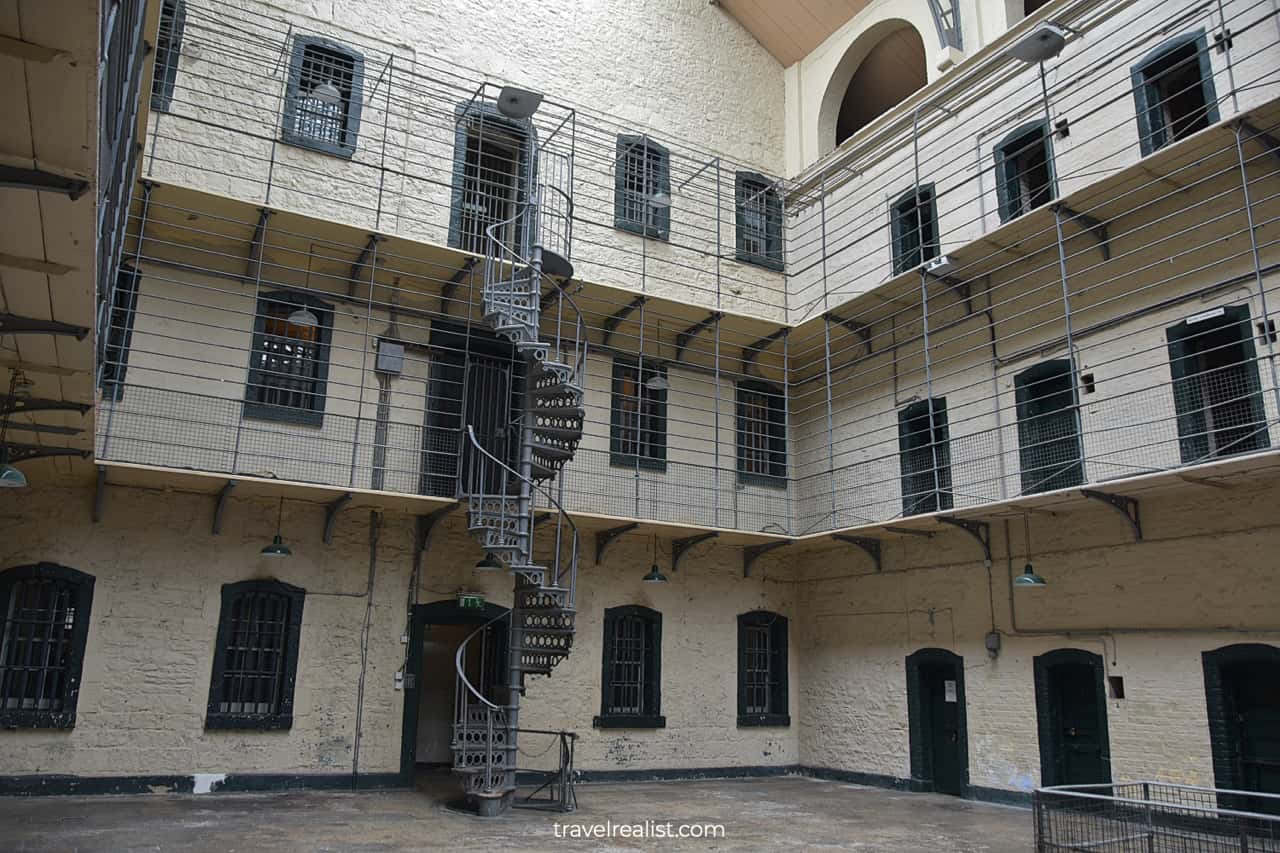
The large skylight ceiling fills the hall with lots of sunlight.
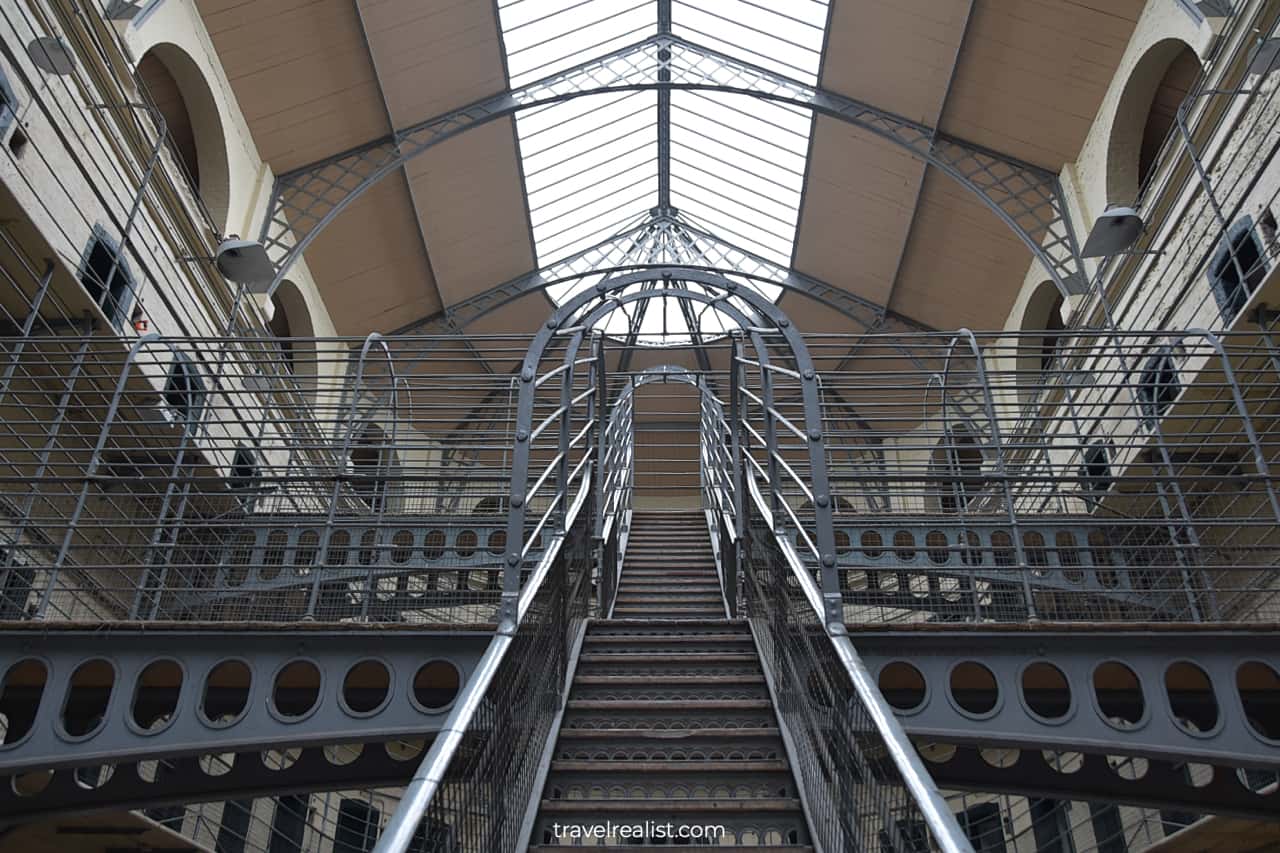
Prison Cells
Unfortunately, the prisoners had less appealing views. Individual cells had small windows close to the ceiling. Guards used door peepholes to observe the prisoners.
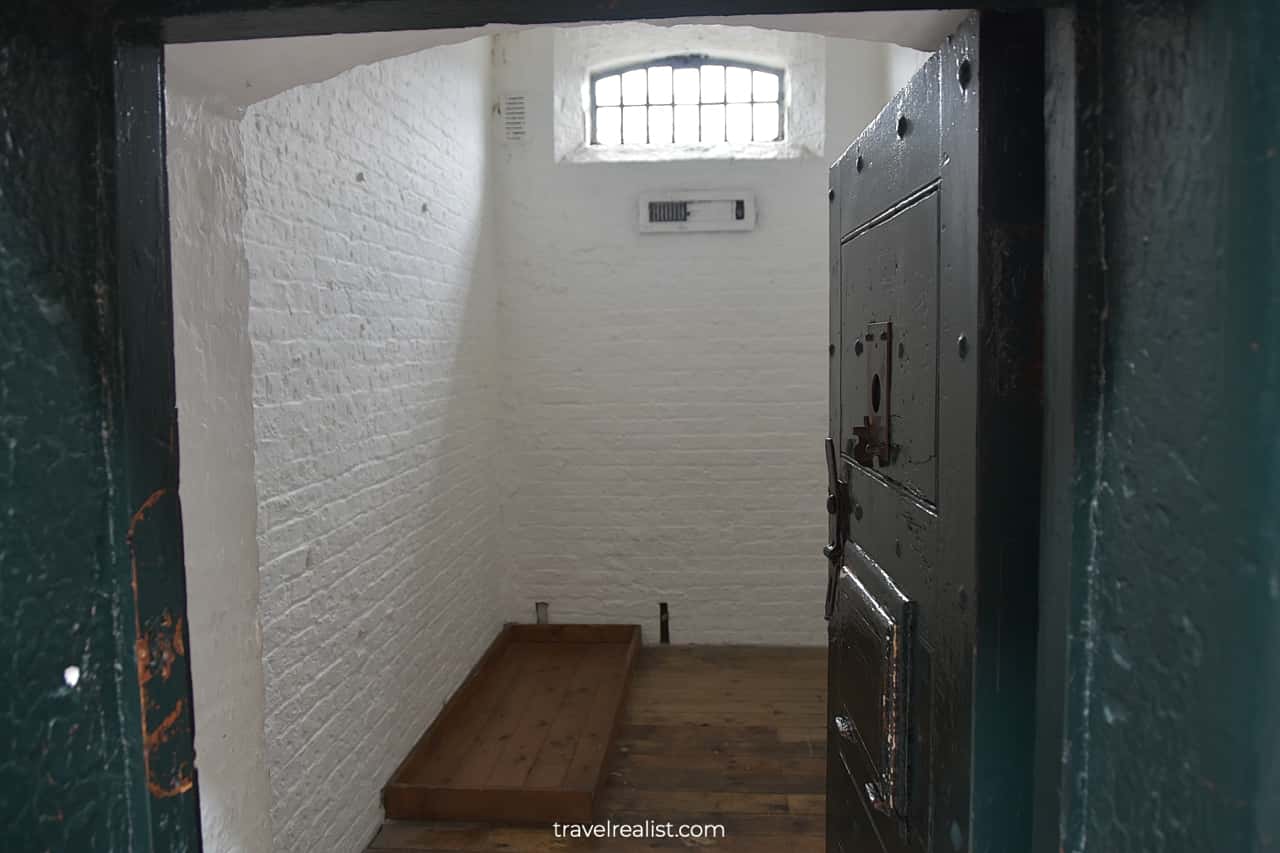
Some cells have name plaques to indicate which famous Irish revolutionary served their time there. This cell belonged to Grace Gifford Plunkett.
This is the same Grace who married Joseph Plunkett in the Chapel hours before his execution.
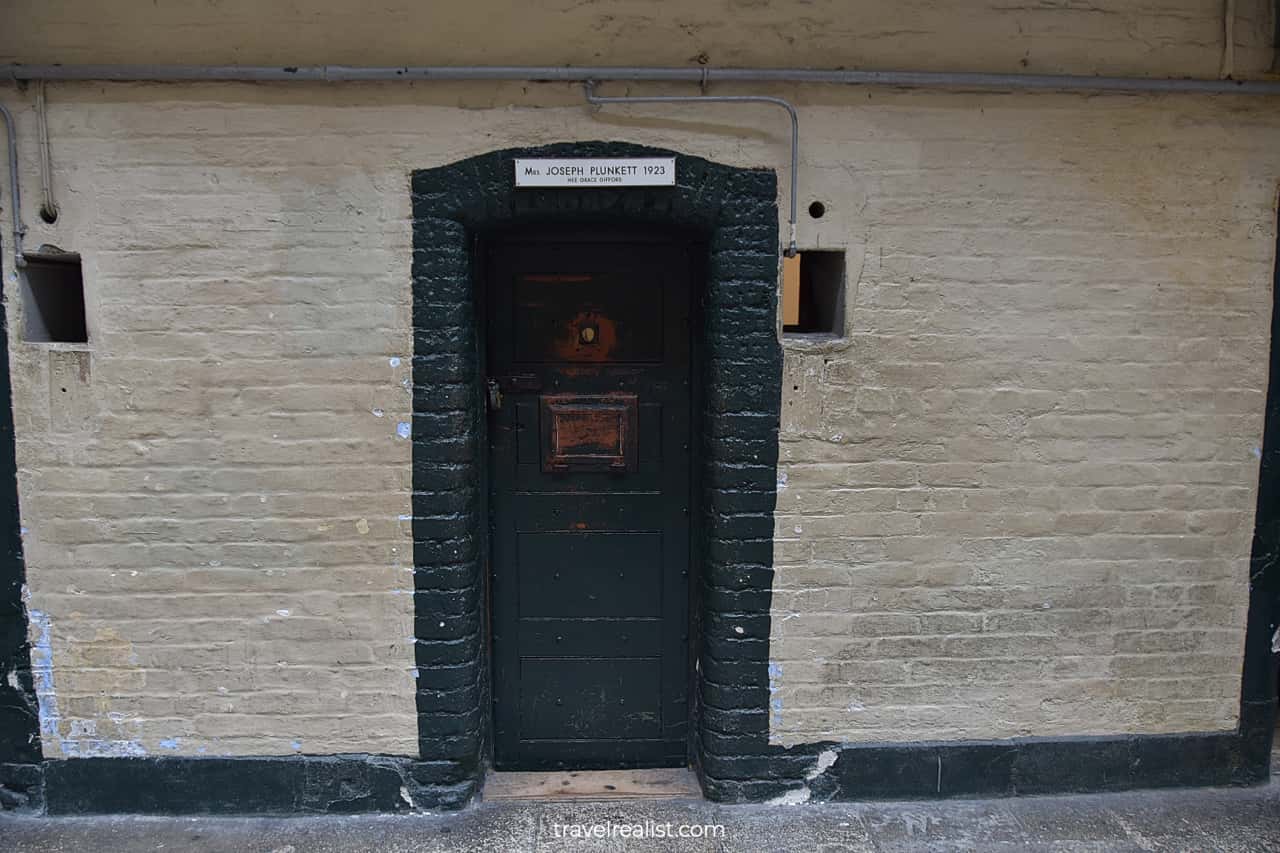
During her time Grace made a painting of Madonna and Child in her cell. Take a look at this painting through the cell’s peephole.
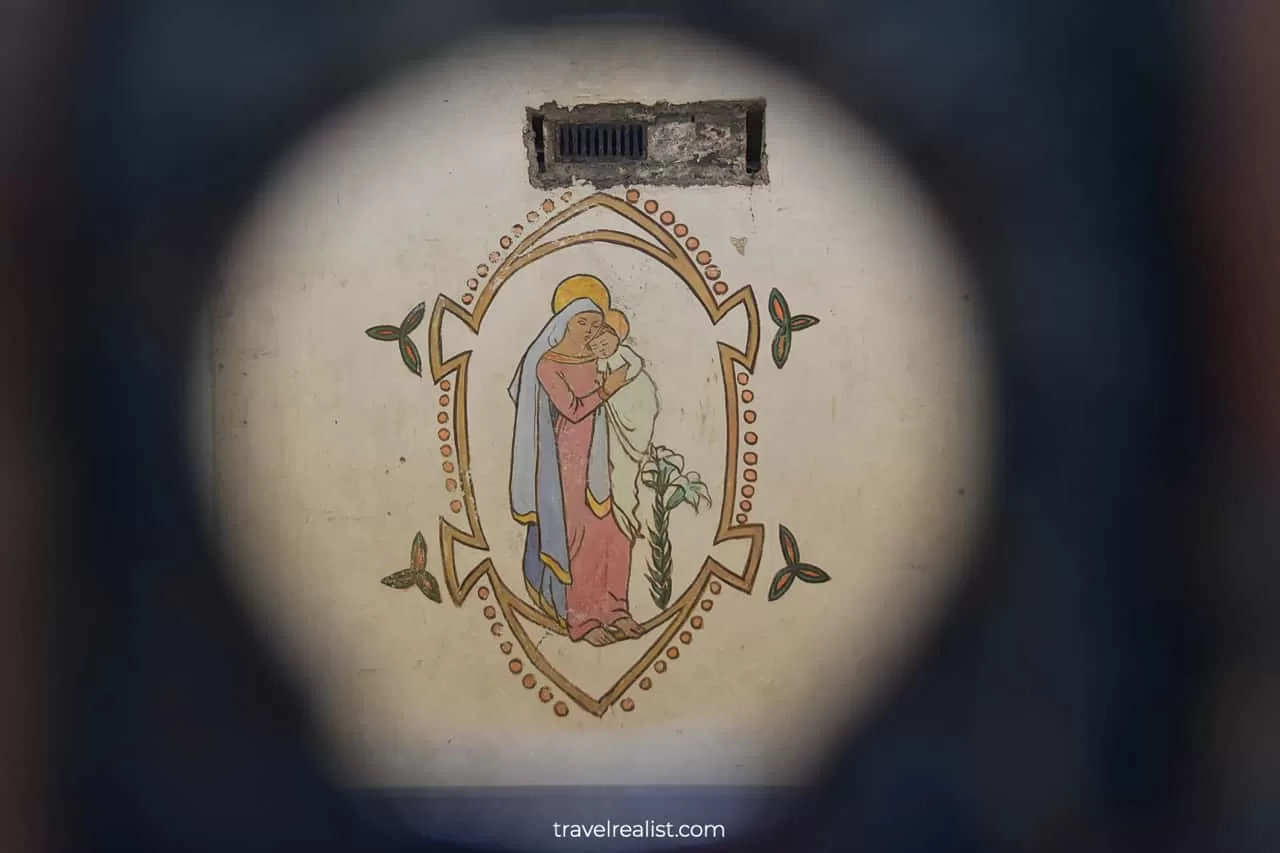
Stone-breakers’ Yard
The tour then brought us to the Stone-breakers’ Yard next. A thick wall between 30 and 50 ft (9-15 m) deep surrounds the prison and the Yard.
The Yard’s name comes from the activity of breaking stones that prisoners had to perform. Later, the Yard became the place for carrying out executions.
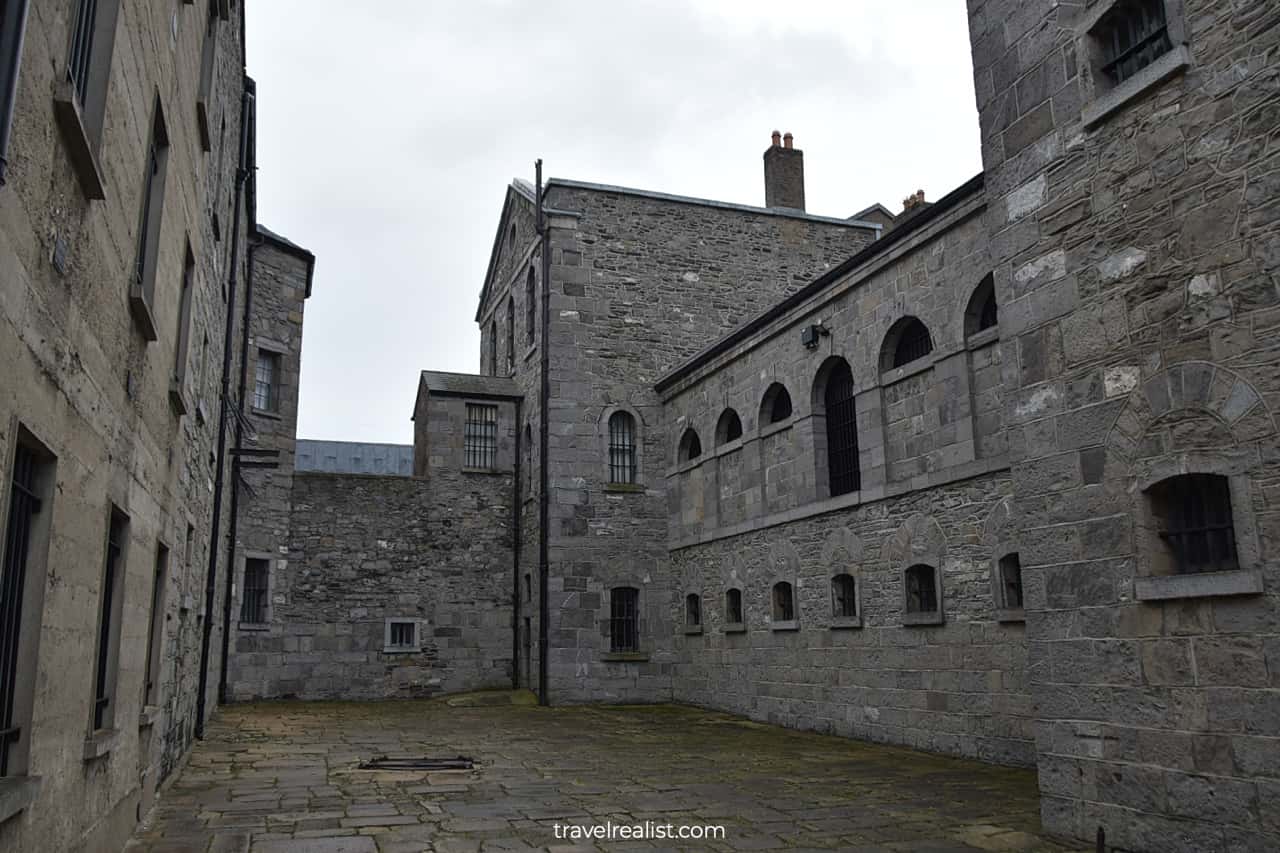
The yard features several crosses that indicate execution spots. This particular cross marks James Connolly’s execution spot.
He was sentenced to death by firing squad for his part in the Easter Rising. James Connolly was so badly injured that he could barely stand during his execution.
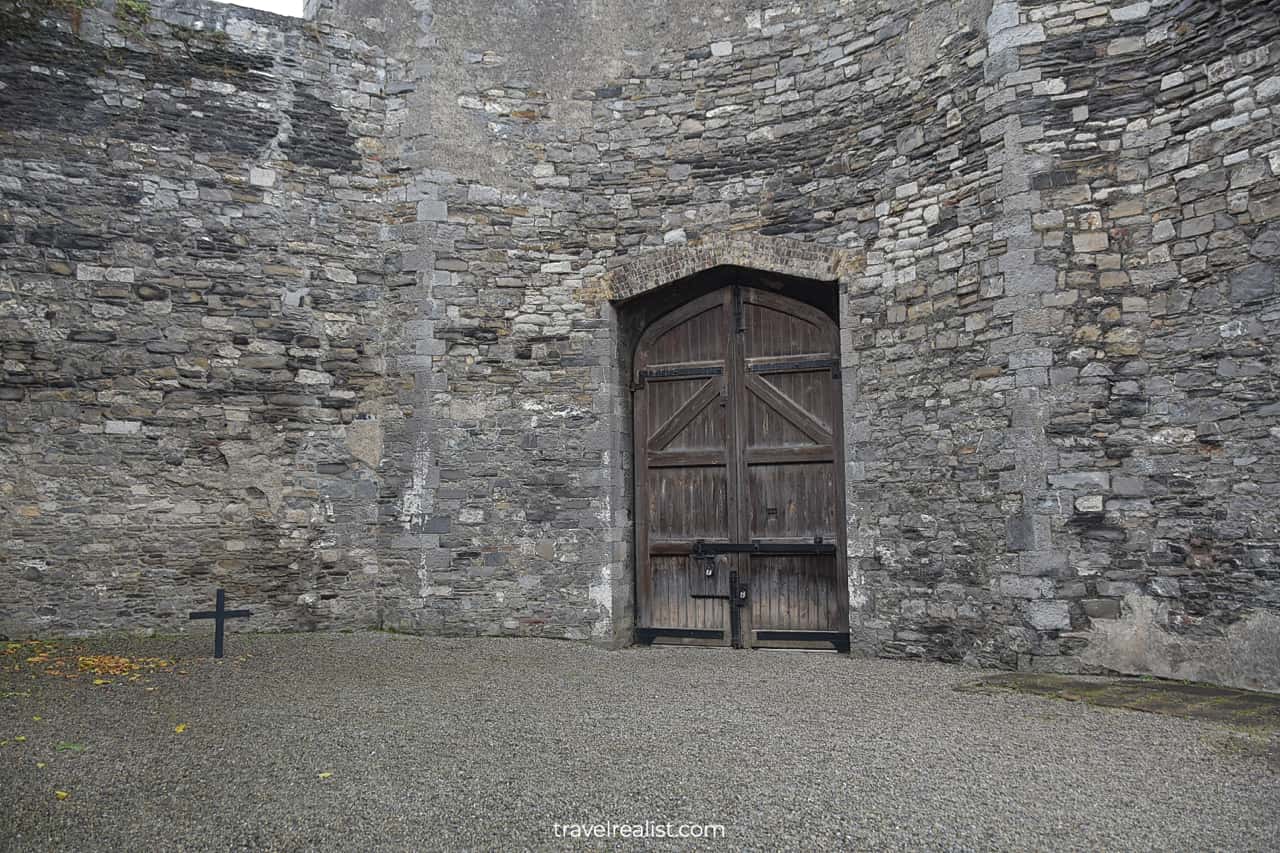
The tour ends at the Stone-breakers’ Yard. From there you can either leave or explore the Kilmainham Museum. The museum houses several artifacts from the prisoners.
Continue with our Kilmainham Gaol Guide to learn more about ways to get to the sights, entrance requirements, and places to stay.
Getting to Kilmainham Gaol
You can visit Kilmainham Gaol as an extension of your Walking Tour of the City Center. You can reach Kilmainham Gaol by public transport, biking or walking.
To reach Kilmainham Gaol by public transport, take
- Luas Tram Red Line: Suir Road is the nearest stop. A single ride on Leap Card costs €1.30 or €2 depending on your starting stop. See the fares here.
- Bus: routes 13, 60, G1, and G2 stop near Kilmainham Gaol. A single ride cost is similar to Luas fares. See the fares here.
Pro Tip: if you plan on using public transport in Dublin, get a Leap Card. It will provide you with discounts on every ride for a €5 deposit. You need to get a physical card but you can top it up via an app. Leap Card offers Visitor Card passes with special fares for 1, 3 or 7 days.
You can also bike to Kilmainham Gaol if the weather is nice. If you start from Dublin Castle, you can cover 3 km (1.8 mi) in about 20 minutes. The ride is flat and quite easy.
On the flip side, you will be biking next to the cars. Dublinbikes 1-day ticket costs €3.5 with no extra charges for trips under 30 minutes. It makes a city bike a cost efficient way to explore the city.
If you prefer to walk, it will take you approximately 40 minutes from Dublin Castle and St Patrick’s Day Parade route.
Kilmainham Gaol does not have car parking. But the nearest car park is next to the Irish Museum of Modern Art. It takes 5 minutes to reach the prison from there.
Where to Stay
There are just a few hotels within a walking distance from Kilmainham Gaol. Consider expanding your search along the Luas Red Line to the central Dublin and Dublin Docklands. This way, you could stay more centrally and possibly get a better deal.
Entrance Requirements & Passes
You can access Kilmainham Gaol by guided tour only. Kilmainham Gaol offers several tours daily. But the tours usually sell out as soon as the tickets are released. It is best to purchase your tickets in advance.
You can reserve tour tickets online up to 28 days prior to the tour date. Solo travelers with flexible schedule might snag a last minute ticket thanks to cancelations. But we would not count on this chance.
Tour tickets cost differs based on your age and category:
- €8 per ticket for Adults
- €4 per ticket for Seniors, Students and Children
- Free for for children under 12. But they would still need a valid ticket to enter
- Free for people with disabilities and their accompanying carers
If you travel as a family, the Kilmainham Gaol family ticket could offer some value. You could visit the historic prison for €20 for 2 adults and 2-3 children. Second or third child would enter for free.
Kilmainham Gaol’s open hours depend on the month:
- October to March: from 9:30am to 5:15pm
- April to May: from 9:30am to 5:45pm
- June to August: from 9:30am to 6pm
- September: from 9:30 am to 5:45pm
The prison is closed on December 24-27.
Takeaways: Kilmainham Gaol Guided Tour
Kilmainham Gaol is an important monument of modern Irish history. It tells the story of the Irish struggle for Independence through its famous prisoners.
The Kilmainham Gaol tour is a must visit if you want to learn about the men and women who contributed to the Irish Independence fight.
The tour guides are very knowledgeable and passionate about Gaol’s and its prisoners’ history. Like Alcatraz and other prisons around the world, Kilmainham Gaol is a sad place of human suffering.
Yet, our Kilmainham Gaol Guide considers it well worth a visit when in Dublin.
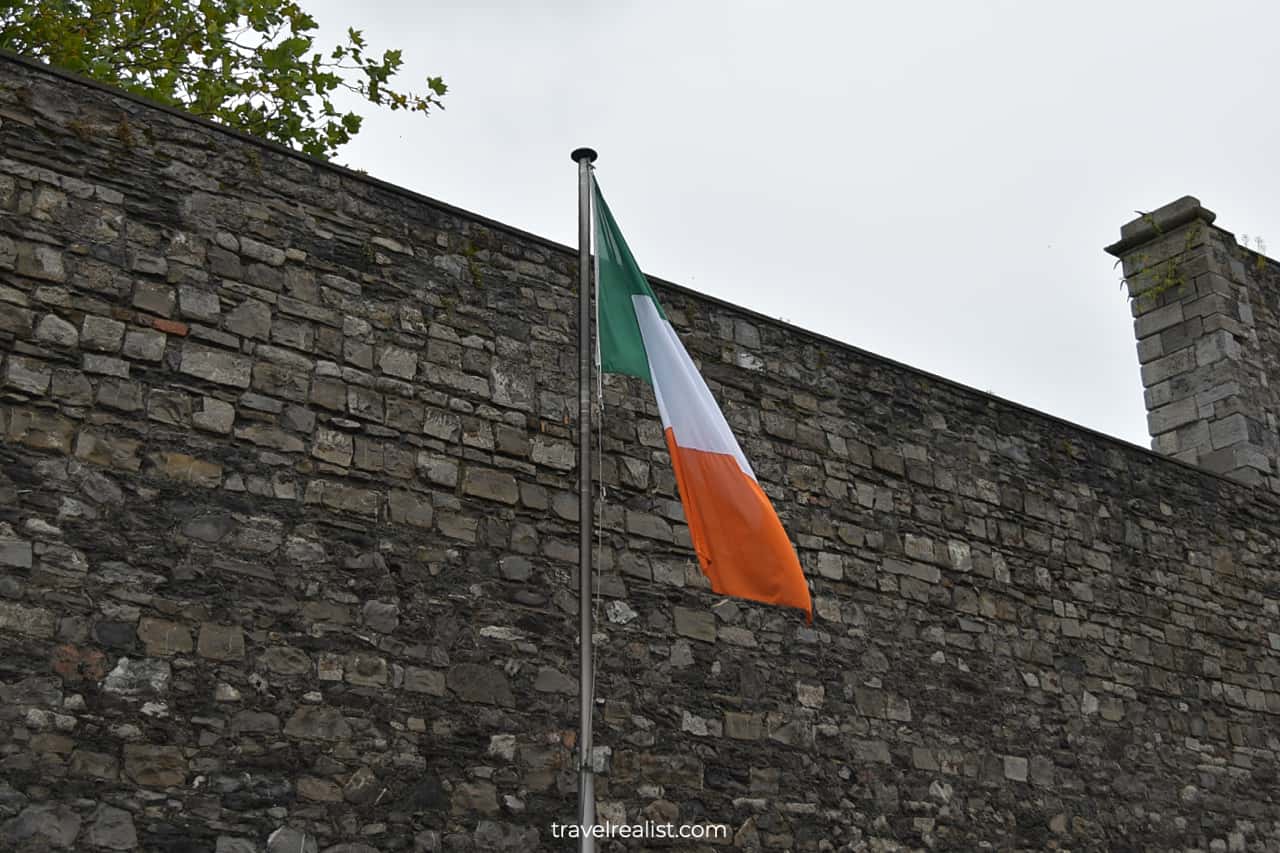
Frequently Asked Questions
Kilmainham Gaol in Dublin is a must see destination for history lovers. The tour of this historic prison will keep you and your family captivated throughout the visit.
Kilmainham Gaol is a significant monument of modern Irish history. It tells the story of the Irish struggle for Independence. The prison is famous for the political detainees who served their sentences in Kilmainham Gaol.
The tour lasts approximately 1.5 hours, including the time to check in.
Kilmainham Gaol tour tickets are:
– €8 for adults,
– €4 for seniors, students and children between 12 and 17,
– Free for children under 12 and people with disabilities,
– €20 for family (2 adults and up to 3 children).
Make sure to book your tickets 28 days in advance.
Kilmainham Gaol tour routinely sell out. You need to book your tour tickets 28 days in advance. Solo travelers might have better luck in case of the last minute cancelations.
The following sights are within a walking distance of Kilmainham Gaol:
– Irish Museum of Modern Art (10 minute walk),
– Irish National War Memorial Gardens (13 mins),
– Phoenix Park (17 mins),
– Guinness Storehouse (22 mins).
Safe realist travels!

